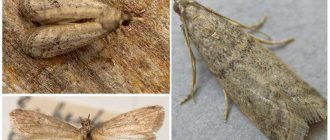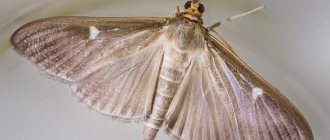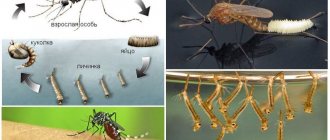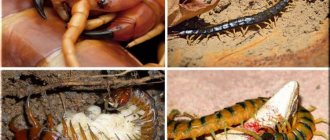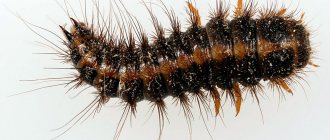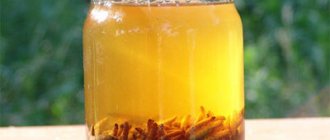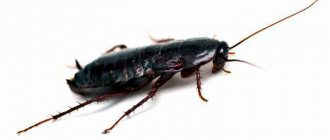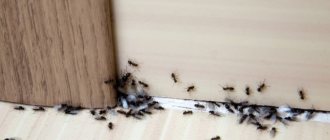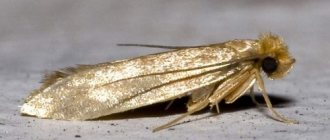Where does the poplar moth live?
There are many nocturnal inhabitants found in nature. This variety is most common in the Caucasus, in Central Asian countries (Kazakhstan, Uzbekistan, Kyrgyzstan, Turkmenistan, Tajikistan) and in European Russia.
The parasite prefers regions where balsam, pyramidal, sweet-scented and laurel-leaved poplar grow, and avoids areas with black and Canadian poplars. Leaves wild forests unattended.
On the South American continent there is a large subspecies with a wingspan of 7 cm and above.
Habitat of the poplar moth.
Thanks to their coloring, insects are invisible during the daytime. In the evening, they gather in the light of lanterns, cover the ceiling, fly into open windows, into entrances, and land on people.
Unwanted guests do not allow the home to be ventilated. Colonies of the moth quickly fill electrical appliances, chandeliers and lampshades.
White fluff is a favorable environment for the parasite to reproduce. The summer heat protects against the growth of pest numbers.
Cool summers and warm winters, on the contrary, contribute to an increase in the population and lead to sharp surges in numbers and invasions.
The moth from Asia mines linden forests in Europe
An international team of scientists has discovered the distribution routes of the linden moth. Genetic analysis of almost four hundred insect samples collected over a vast area from the Far East to the Netherlands showed that Japan was potentially the source of the pest's westward spread. The study also discovered a previously unknown moth sibling species that is found only in East Asia. The linden moth, which invaded Europe several decades ago, is capable of causing serious damage to linden plantations, primarily in cities and places where linden honey is produced. The study results were published in the journal PLOS ONE.
Massive damage to linden leaves by moths in Novosibirsk, July 2021. Photo by Natalia Kirichenko.
The linden moth belongs to the ecological group of leafmining insects. Tiny moth butterflies (wingspan no more than seven millimeters) lay eggs on linden leaves. The caterpillars hatching from the eggs bite into the leaf and eat it from the inside, leaving behind characteristic damage - mines. After three weeks, the caterpillars form pupae. From the latter, butterflies hatch and the cycle repeats again. In many European cities, linden is actively used in landscaping. Trees with damaged foliage are less attractive and lose their leaves earlier than their healthy counterparts. Moreover, in regions where linden is one of the sources of honey, the insect causes significant damage to this activity.
Phyllonorycter issikii (Lepidoptera: Gracillariidae) butterfly from the entomological collection of Natalia Kirichenko.
“We collected almost four hundred butterfly samples for morphological and genetic analysis from a vast area - from Japan to the Netherlands. This is a large project involving scientists from France, Italy, Japan, South Korea and China, which was started during my internship at the French National Institute of Agricultural Research (INRA) in the laboratory of forest zoology under the direction of Alan Roque. Research in Russia was supported by the Russian Foundation for Basic Research. There are three main results. First, molecular genetic evidence suggests that the moth came to Europe from East Asia, most likely from Japan. Secondly, our research shows that we are not talking about a single introduction of the pest, but about several waves of invasion. And finally, by deciphering gene sequences and assessing the size and shape of the male genitalia, we came to the conclusion that the linden moth has a twin species previously unknown to science, which lives only in Japan and the Far East,” explains one of the main authors of the study, senior researcher at the Forest Institute named after. V.N. Sukacheva Federal Research Center KSC SB RAS and Siberian Federal University Natalya Kirichenko.
The habitat of linden (green), linden moth (orange) and places of collection of material (black dots) for research. Map from the authors' publication. PLoS ONE doi:10.1371/journal.pone.0171104
The linden moth was first discovered and described in 1963 as a species from Japan. Since the 80s of the last century, the insect began to be found in the European part of Russia and a few years later in European countries. The modern habitat of the pest now extends over a vast area of the Palaearctic. Due to the small size of the butterflies, their findings at first were fragmentary, so it remained a mystery to scientists whether this entire region was the primary habitat of the species. The spread of species beyond their natural ranges—biological invasions—is one of the most striking consequences of globalization today. The introduction of alien species can lead to irreversible disruptions in the functioning of natural ecosystems and cause various negative consequences.
Species identification is still a problem for many small creatures. For the world of insects it is especially acute. According to some forecasts, more than 5 million species of insects are waiting for discovery and scientific description on our planet. The classic method for identifying insect species is to study the external and internal structure of adult individuals. Often, when diagnosing species, the final word rests with the male genitalia. Their shape and structure are specific to the vast majority of species. Modern methods of molecular genetics make it possible not only to study the distribution paths of certain organisms, but also to simultaneously discover species previously unknown to science. Studies of such closely related species (sibling species) help to understand the reasons for the success of species in expanding their primary ranges.
Growing linden moth caterpillars to produce butterflies in the laboratory of Kyoto Prefectural University. In the photo are co-authors of the article Natalia Kirichenko and Carlos Lopez-Vamonde. Photo by Issey Ohshima.
“On the territory of Siberia, you can count the natural linden forests on your fingers. One of them is the relict Kuzedeevskaya linden grove in the Kemerovo region. The age of the grove is estimated to be several million years. It is located in a small basin with a microclimate and, most likely, has been untouched since the last ice age,” says Natalya Kirichenko. “We can say that this and several other linden islands in Siberia connected the Far Eastern and European linden areas. It is not yet entirely clear how the pest was able to spread to the west, given the absence of obvious distribution corridors - linden plantations in the Asian part of Russia. We plan to study in detail and describe a new species of moth we discovered from the Far East and Japan. An intriguing question is why one species was more successful and inhabited a large part of the continent, while the second lives only in East Asia. As a curious fact, it can be noted that the more common species has male genitalia that are somewhat larger than those of its counterpart species, but this can hardly serve as a justification for its success. To be serious, we obviously caught the process of speciation taking place in East Asia in the group of linden moths by the tail, and recorded the moment of the appearance of a new species. This is a very interesting phenomenon for fundamental science.”
The study was supported by the French Foundation Le Studium and the Russian Foundation for Basic Research (grant No. 15-29-02645-ofi-m). Additional information about the study results can be obtained from Natalia Kirichenko.
Scientific Communications Group of the Federal Research
What does it look like
The name “poplar moth” is considered conditional. Entomologists classify the insect as a subspecies of the Butterfly family. Because of the characteristic marks that the small pest leaves on the foliage, it is called a leaf miner.
Moths are distinguished by narrow, blade-shaped wings edged with fringe. The front pair is brown with small white and brown contrasting inclusions, the back pair is shorter, steel color. The wingspan of an adult insect (imago) is 6-10 mm, the average length is 5-8 mm. Such colors and sizes make the moth invisible against the background of trees.
Cocoons hide in cracks and crevices of houses, bark, hollows, fall into the ground with fallen leaves and continue to live after wintering. At the end of spring, harmful insects fly out and actively mate.
Photo of an adult moth.
Appearance of an insect
The poplar moth is a white butterfly. The narrow wings have a fluffy fringe. This allows her to skillfully disguise herself as poplar fluff. Black spots can be seen on the tips of the front wings. The hind ones are darker in color - from brown to brown. The wingspan is 7 mm. There are long antennae on the head.
Larvae are caterpillars with a body length of no more than 5 mm. The color is light yellow. At this stage of development, the poplar moth merges with the general background of the leaves and calmly parasitizes.
How to recognize an insect
The greatest damage from the pest occurs in urban green spaces. The main food is poplar, but the parasite does not ignore other plants.
You can recognize an insect by its characteristic features, including:
- Leaf fall. Moth colonies eat the foliage, causing it to fall prematurely and the branches to freeze. In such cases, many trees die.
- Moves of different configurations. Depending on the type of tree or plant variety, the pestle makes pinpoint punctures, bizarre passages of white and yellowish colors, and grinds off the entire surface.
- Through holes in young leaves (mines). The caterpillars choose a place for pupation in fresh greenery, eating large holes with a diameter of 1.5-2 cm.
- Spots on the crown. Damaged plates quickly turn yellow, fade and fall off.
Poplar leaves damaged by moths.
Old trees are more difficult to tolerate pest invasions.
Stages of reproduction
One complete phase of the poplar moth life cycle is 2-3 months:
- Mating occurs in mid-spring.
- In May, the female lays alternately up to 32 eggs on the underside of last year's leaf. The eggs are oval in shape, flattened at the edges, covered with the secretion of the gonads. They have a rough texture, matte, with a diameter of 0.2-0.3 mm.
- In 1-1.5 weeks, larvae form, which climb into the leaf plate and are covered with a thin film. At this stage of development, they vigorously eat greens, accumulating the necessary nutrients.
- After 2-3 days, young caterpillars 3-5 mm long hatch. The shape of their body is transformed 5 times - from legless and pale, the caterpillar turns first into white, then into lemon with 2 pairs of legs. Eats only fiber.
- A loose cocoon of cobwebs forms in the through hole. The development stage lasts from a week to 10 days. The sharp cocoon of a light brown hue reaches 4-5 mm in length.
- From late July to early autumn, the pupae turn into butterflies and live for 3 days.
Stages of moth reproduction.
Each adult strives to lay as many eggs as possible. Suitable places for breeding are bags of flour, cereals and dried fruits.
What does it eat?
The main source of food for the insect is poplar. Caterpillars eat green foliage, and adults find food in the tree trunk. In the cold season, they make do with fallen poplar leaves and linden bark.
In addition, the moth also likes to profit from other plants, these are:
- fruit bushes and trees (pears, apple trees);
- hardwoods (aspen, maple and linden);
- flowers (rhododendron, roses, violets and chrysanthemums);
- greens (lettuce);
- vegetables (cucumbers, etc.).
The moth eats each green space in different ways:
- intersecting paths remain on the crown of apple trees;
- brown burrows appear on pear trees;
- rhododendron foliage is completely eaten;
- through dots and curly patterns are visible on the rose bush;
- cucumber and violet plates are distinguished by narrow paths with whitish dots.
Harm caused
The opinion of all scientists is that the poplar moth does not cause much harm to humans. In the family of this species there are omnivores that eat whatever they can find. This type of insect does not eat food supplies, does not spoil things and clothing, and does not spread dangerous diseases. The appearance of winged small creatures in the house is more irritating to the nervous system, and a person tries in every possible way to get rid of them.
But for plants and garden trees, such a neighbor is extremely undesirable. Caterpillars can settle on apple, pear and other garden trees. Paths and dark spots form on the leaves. If there is a large infection, the tree will be without leaves, flowers and fruits. Since in May the larvae eat not only leaves, but also buds and unopened buds.
Flowers may also suffer from such an invasion. Roses, violets, chrysanthemums and other plants that are nearby. On the reverse side of the sheet numerous snake-like passages and dots are visible. In the garden it grows on cucumber and lettuce leaves.
Do poplar moths bite?
The moth cannot bite a person; it can only cause psychological inconvenience and disrupt the cozy and comfortable atmosphere of a house or apartment.
Is it dangerous for humans?
The parasite is not dangerous to human life or pets.
Poplar moth is absolutely safe for humans.
Poplar moth, unlike rodents (rats, mice) and some insects (lice, mosquitoes, flies, bedbugs), is not a carrier of severe infectious diseases, and therefore does not harm health.
Having flown into a room, moths do not spoil clothes and food, but leave marks that are difficult to remove on furniture and home textiles.
Electrical installations, equipment and lighting fixtures suffer from moth infestations. Insects flock to the light, get into chandeliers and lampshades, and lay eggs in equipment, damaging and dirtying it.
The presence of uninvited guests in the house irritates the owners, so all available methods of control are used.
Preventing moths
To avoid encountering the problem again, just follow simple rules:
- Housing needs to be cleaned regularly and things need to be taken care of.
- It is better to throw away clothes that are not worn for a long time.
- Every year you need to check the condition of pillows and blankets. They can be treated with a steam iron and ventilated in the air.
- Moths are attracted to greasy stains. Before summer, seasonal items should be washed, steamed, or dry-cleaned to reduce the likelihood of insects appearing.
- After washing, it is advisable to put things in vacuum bags.
- Bulk products are best stored in airtight containers. You can't leave leftover food in sight - you need to put it in the refrigerator.
- Moths prefer high humidity and lack of ventilation, so the apartment must be regularly ventilated.
- Insects do not like bright light - it is desirable that the apartment be bright.
- Having noticed that moths appear in the apartment every year, tablets, sections, and briquettes should be used as preventive measures.
In the fight against poplar moths, the same measures are used as against mosquitoes and flies. If independent attempts to get rid of it are unsuccessful, you should turn to professionals. Experts eliminate moths not locally, but with the help of a water suspension that penetrates into hard-to-reach corners of the apartment. This ensures complete destruction of pests.
Ways to fight in an apartment
The main rule for effective control of harmful insects is that all steps are taken before the poplar begins to bloom.
In the event of pest penetration into a home, before choosing a method of destruction, it is necessary to determine the stage of its development.
To combat this species, there is no drug that can simultaneously cope with both larvae and adults.
You can fight moths or prevent their appearance in your apartment in the following ways:
- Installing a mosquito net with small mesh on the windows (if not available, use gauze). Such a barrier protects the room if there is a danger of an adult insect entering it.
- Use of fumigators. Small and economical electrical appliances operate from the mains, electricity consumption is only 3-5 W/day. The device is refilled with modern insecticides that are harmless to people and animals in liquid form or in the form of plates.
- Clutches of eggs have to be destroyed in cracks and holes using a vacuum cleaner.
- The use of insecticidal preparations in the form of sprays and aerosols against adult moths. Such means kill both flying and crawling individuals. After spraying, wet cleaning and airing of the room are indicated.
- An effective method of control is to install glue traps, which the insect is afraid of.
With the first frost, the pests die. Next season, it is recommended to use preventive measures to prevent mass invasions. Since mid-spring, municipal institutions have been carrying out special treatment of plantings.
Types of funds
It is impossible to achieve complete disappearance of the pest in one go. Many areas are addressing the problem ahead of time. In the fall, fallen leaves are destroyed, and in the spring, the crowns, trunks and tree trunk areas are sprayed with chemical compounds.
It is recommended to choose poisons with caution.
Urban landscaping uses plants that attract natural moth regulators. Entomophages eat up to 60% of moths.
In addition to preventive measures, the following chemicals and poisons are effective in combating the poplar moth population in urban environments and garden plots:
- Numerous clutches of eggs and caterpillars are destroyed by compounds that contain paraffin or karbofos. The drugs are ineffective in removing adult moths. Toxic substances can damage other crops; the proportions specified in the instructions must be strictly observed.
- Safe insecticidal mixtures of pyrethrum (Caucasian chamomile) in liquid or powder form are used against caterpillars and butterflies. A fast-acting composition without a strong odor has a paralyzing effect. Diluted and applied in the morning or evening up to 7 times per season, with breaks of 4-6 days. To destroy the pupae, the solution is poured into the ground.
Tree processing.
Since insects quickly adapt, are highly resistant to many poisons and are not afraid of pesticides, it is recommended to alternate drugs or combine them.
With numerous outbreaks, the number of miners is reduced in a radical way - poplars are cut down and other tree species are planted.
Traditional methods
Experienced gardeners and summer residents use the following methods to kill moths:
- cleaning infected trees with strong water pressure - acts as a deterrent, helps get rid of a large number of individuals, and interferes with reproduction;
- boards with glue or special baits from a specialty store;
- settlement of ichneumon beetles on the site, in the greenhouse, eating imagoes and oviposition;
- inspection of plants and mechanical removal of damaged leaves;
- to prevent reproduction, low-growing crops (flowers and cucumbers) are covered with non-woven fabric;
- oil of spring crops applied to the foliage can repel the pest.
The insect will not disappear completely. The methods are effective for reducing the number in the current period.
Methods of destruction
There are no special means that would destroy the moth once and for all, so the question of how to deal with poplar moth continues to be relevant.
Experts in this field most often propose a radical way to solve the problem - massive cutting down of poplars and planting instead of them trees that are more resistant to poplar moths.
How to get rid of larvae
An adult poplar moth lays eggs once every 24 hours. Poplar moth larvae emerging from laid eggs develop dynamically. To completely get rid of such an insect, it is necessary first of all to eliminate the larvae.
You can do this as follows:
- Treat the suspected location of the larvae with special paraffin-based products.
- Use entomophages (beneficial insects). The greenhouse or vegetable garden is inhabited by riders, namely individuals that destroy pest eggs.
- Use pyrethrum-based insecticides. Manufacturers obtain this natural insecticide by grinding dried Persian or Caucasian chamomile flowers.
The peculiarities of the poplar moth and the fight against it are that any actions should be performed before the fluff appears.
Destruction of moths in the apartment
Quite often, such a pest enters the living quarters of houses or apartments.
Below are ways to get rid of poplar moths in an apartment:
- You can protect your living space from the penetration of poplar moths by installing mosquito nets that have small cells on windows and doors, or you can use gauze cloth. Such materials serve as an excellent barrier.
- Install fumigators in the room, which are compact devices that operate from a standard electrical network and consume 4-5 W of electricity. The insecticide can be filled in the form of plates or a vessel with liquid. Such devices are harmless to people and pets.
- If the moth has laid eggs in hard-to-reach places (cracks, joints), then use a vacuum cleaner or similar device to remove them.
- Moth aerosols are considered the most effective against butterflies flying around the apartment. The active ingredient in sprays can be an insecticide with enteric contact action or nerve agent action. It is guaranteed to completely destroy flying and crawling insects.
In addition, traps are installed in residential and utility rooms, the inside of which is treated with an adhesive composition.
Chemicals
Poplar moth can be controlled using chemicals and toxic substances. The active components act on adult parasites. Larvae and pupae can continue their development.
To minimize harm, you should give preference to products with paraffin.
Poisons should only be used if the area is severely infested. It is important to follow all safety precautions. It is recommended to carry out the manipulation in the morning and evening hours 5-6 times every 3-5 days.
Moreover, the moth dies after the initial treatment, and the procedure must be repeated several times to destroy the larvae. If pupae are present, such insecticides are useless. To get rid of them, you need to water the soil with a solution of pyrethrum.
Folk remedies
If a poplar moth appears, experienced summer residents know well how to deal with it.
They offer these options:
- If moths make themselves known in greenhouses, then you can use their natural enemy - the parasitic insect. Depending on the species, it will fight with adults or larvae.
- It is recommended to inspect the plant for pests as often as possible. Already damaged leaves should be cut off and destroyed.
- If the plant is undersized (cucumbers, flowers), then it can be covered with a non-woven fabric. This is done to prevent the moth from laying eggs.
It is possible to save the leaves of the plant if you spray them with pyrethrum-based preparations. This must be done quite often with a short time interval.
Video
Poplar moth attacks the apartments of Polevka residents

